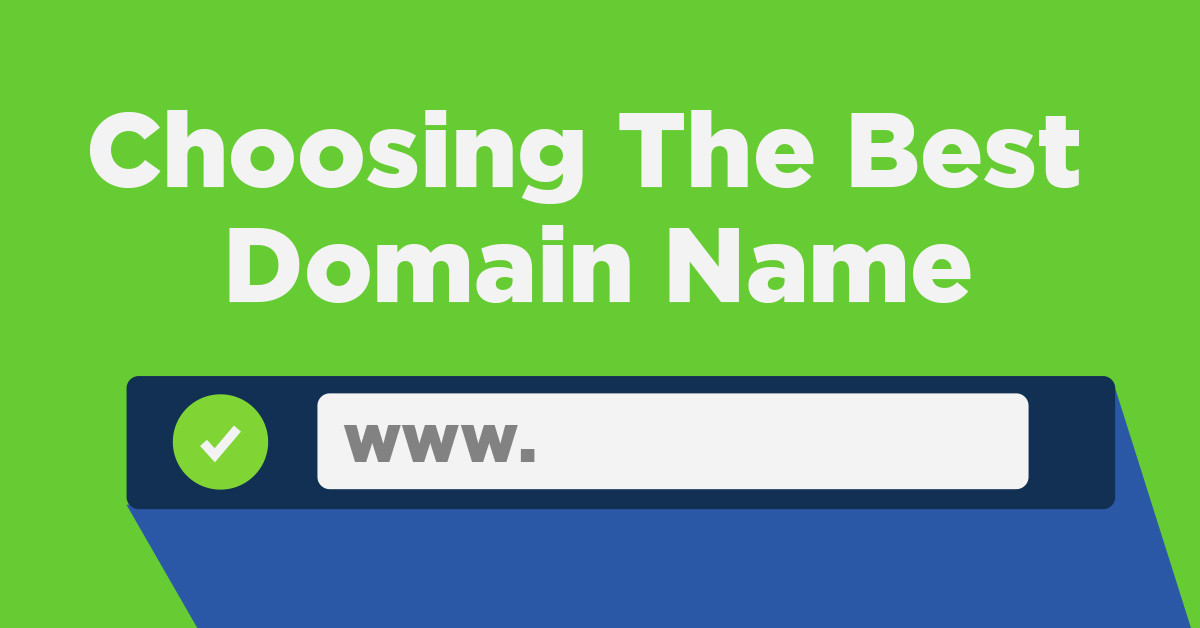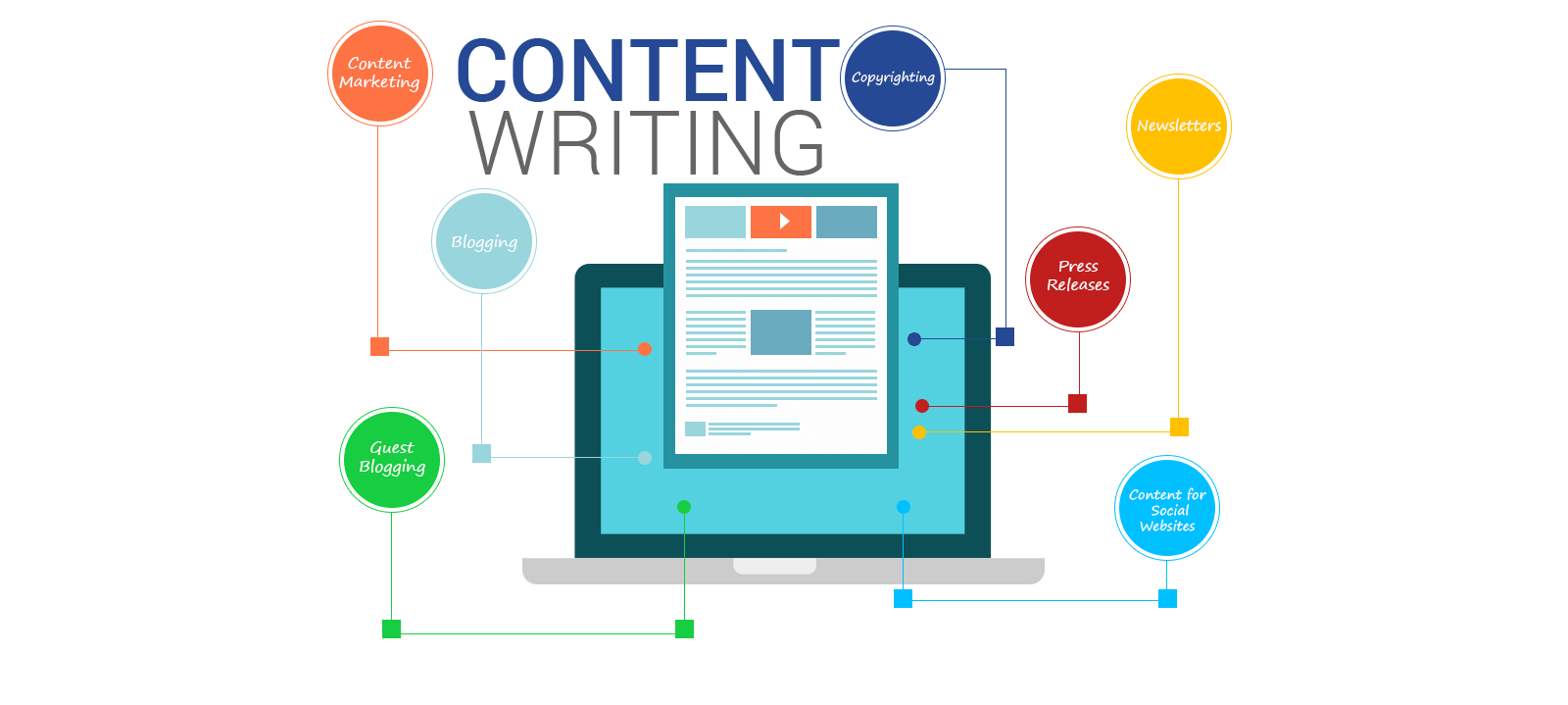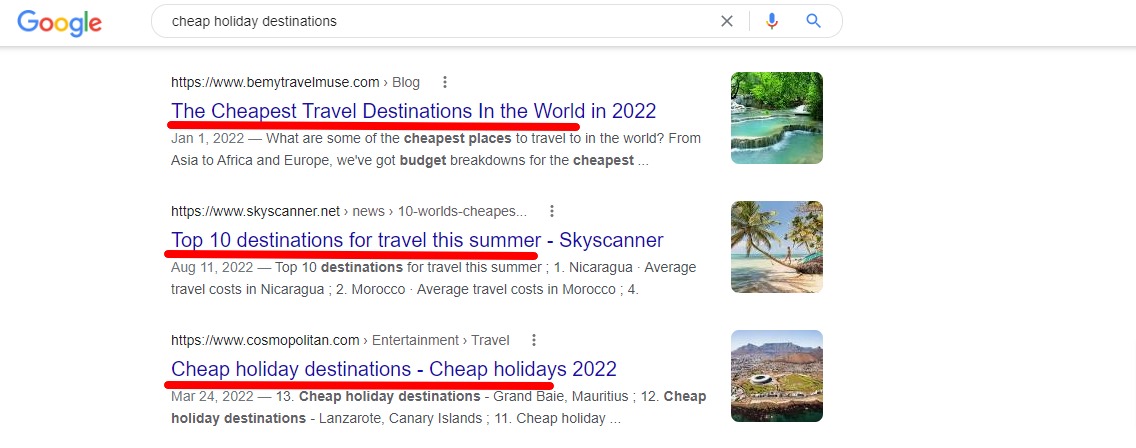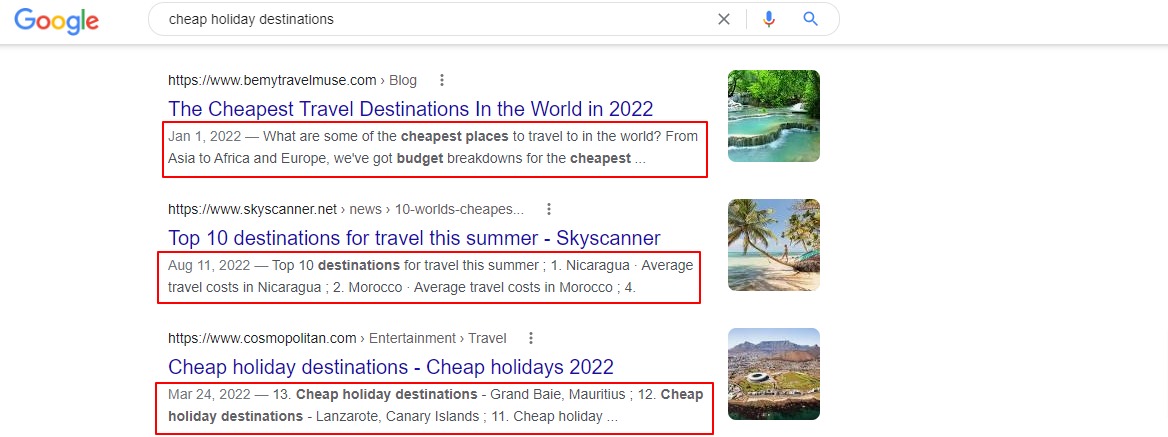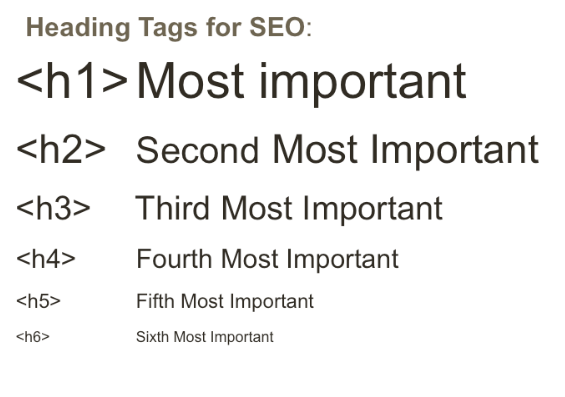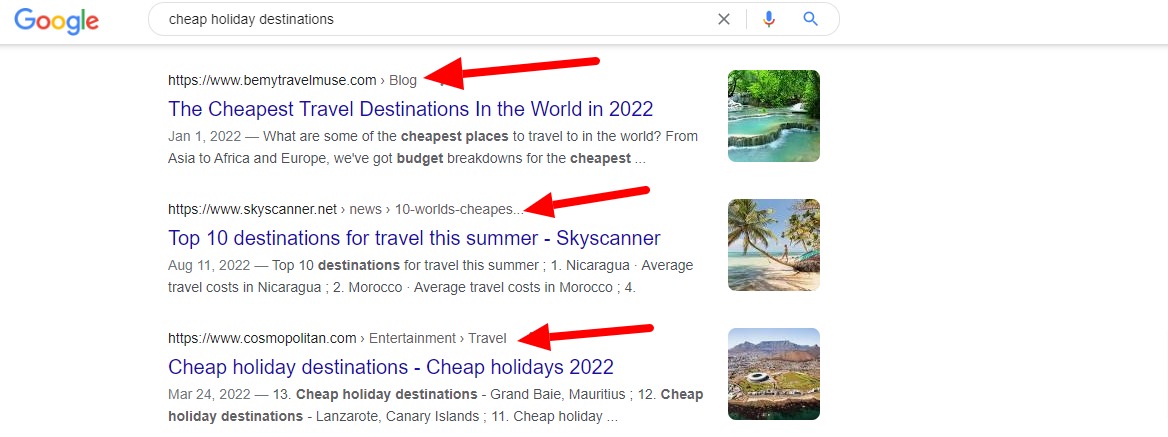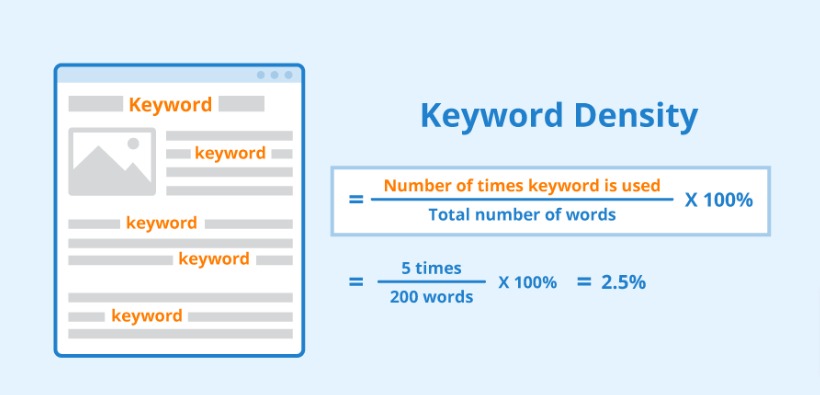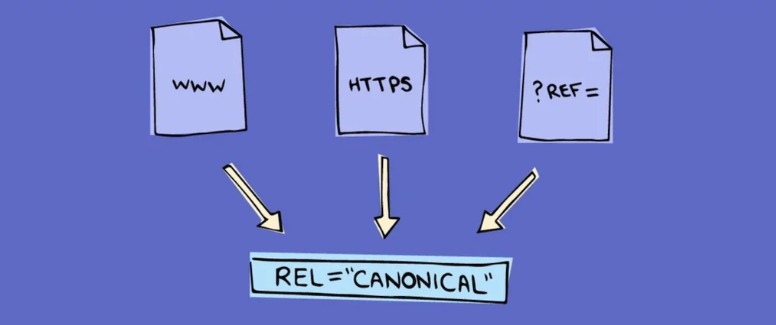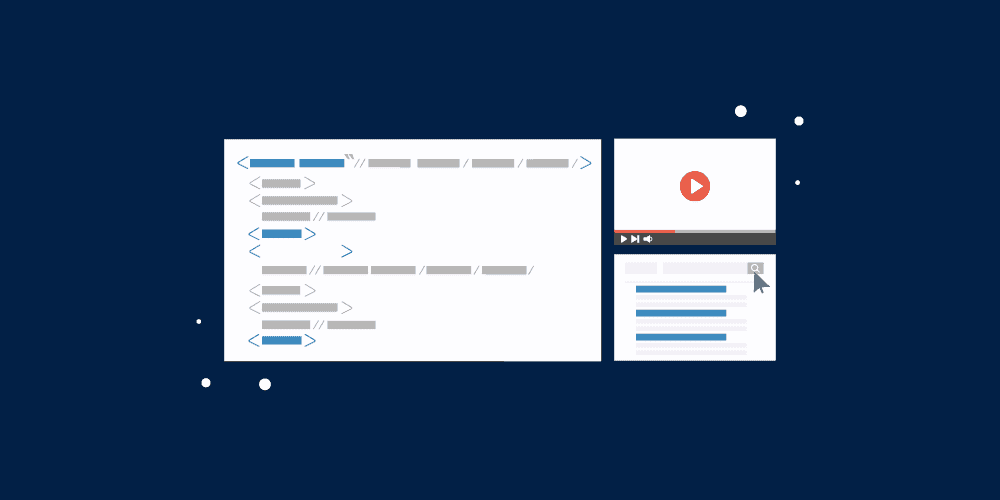Making your blog has never been less complicated. Facebook and Twitter accounts can be created in minutes, allowing you to begin sharing your opinions worldwide immediately. But it’s not quite simple if you want to build a popular blog.
Before you sit down to create your first blog article, there are a few fundamental ideas you should get a handle on. In this post, we will discuss seven ideas that will assist you in making a blog in which you can be satisfied.
1. Differences Between Authority Sites and Niche Sites
Before you go further, you will want to decide on what kind of website or websites you want to build:
Authority Websites
These are the type of sites considered to be significant. They usually target a wide range of keywords and have a lot of content. In general, that is true, but smaller sites can be seen as an authority by Google as well, and that’s something that matters to us because that will bring in traffic and profit.
One of the best advantages an authority site can have over other types of sites is the achieve a status of high trust and… …Google starts ranking it for a lot of big keywords and long tail phrases, and the best thing is – all this happens much, much faster (close to instant) than with a regular site.
The Authority Sites must have at least 300-400 articles, well interlinked and structured (more on that later) in order to be considered big.
The more content, the better
And why is that – is because the more content you have, the more pages you can index in Google and interlink for undepleted link power and trust flow. All this strengthens your site and makes it rank easily and faster.
Niche Websites
These are the type of sites considered to be small in size. Small niche sites can be seen as authoritative by Google. There’s a misunderstanding that you must make a big site with lots and lots of articles to make Google trust your site.
Each type of site has strength points over other types of sites, but no matter whether small or big is going to mean profit at the end of the day.
Niche sites usually have only 10 or 20 articles, sometimes even fewer.
Because of the number of articles, these are aimed to rank for only a handful of low-competition keywords. Basically, becoming an authority and well-known for that specific keywords.
A small authority site can always be built into a much bigger authority site. If you add more content, it evolves into a big authority site.
And that means that the more content you add, the bigger and more authoritative it gets, hence ranking for more and more keywords, bringing more traffic and profit.
Many consider that authority sites require a lot of time to become popular and profitable. That couldn’t be further from the truth.
You may not want to build a huge website, which is fine because this course’s point is to know how to build high-quality websites, either small or big.
Sites that are (and look like) big brands, regardless of how much content you have on them.
2. How To Pick The Best Domain Name
Once you have everything ready, you must decide what kind of site you want to make. You need to know the type of domain names you can choose:
- Brandable domain
Where you want to create a long-lasting brand, usually, these are best for broader niches or sites that will take care of a bigger part of a niche or a whole niche.
You want people to recognize and remember your brand as the #1 source for many subjects within that niche.
- Exact match domain (EMD)
You’ll have an advantage in ranking as it’s supposed you will pick your main keyword as the domain name. This is best for smaller or more specific niches where you want to be the #1 source.
You will rank faster and easier with an EMD because it’s much faster to catch relevancy than a brand domain. EMD domains used to give you a huge advantage in Google, but with all the abuse done by newcomers, we aren’t talking about the same power as before (before 2010).
Now here is the tricky part, exact match domains still play a great role in ranking your site, and you won’t get penalized simply by using an EMD.
If you’re doing things as you’re supposed to do, you won’t have any trouble with any penalty.
- Partial match domain (PMD)
This domain has SEO value (or gives an idea of what the site is about) and has that brand value making it recognizable among other average sites.
The site’s name must be catchy, easy to remember, and must hint at the website niche. You should strive to make your site on a .com domain. The .com was one of the first domain extensions and is the most recognized by internet users.
There are people who believe a site is not a site if it doesn’t end with .com so it can help (have your niche demographic in mind when deciding on domain extension)
.Com domains have an advantage SEO-wise but any domain extension can be ranked with the right quantity and quality of links and optimization.
The second best are .net and .org but to give you an idea – around 80% of sites are having a .com domain. By any means, we don’t say you should not consider other extensions. Actually, some unique domain extensions can help to depend on your site demographic and brand.
You can create cool domain names by including the extension (for example, bigdoginco.me).
Here are rules for picking a domain
- The goal is to pick a domain that’s easy to remember and catch and has an air of newness to it. Obviously, if you want to build a niche site, you’ll have to consider getting an exact match domain.
- If you want to build a bigger website, you’ll want to choose a brand name because building a brand has long-term benefits.
- Don’t include hyphens in the domain name – Hyphens are a huge no – especially for creating a brand for a site, but overall are a huge no for any type of domain.
- Don’t use numbers in your domain name – If it fits your brand then go ahead and do it but I think the cases are rare.
- Having a number in a domain name will create a huge confusion – “What’s the site ame, what do I type – number 4 or word four?”.
3. Best Type of Hosting + Best Configuration
The most popular type of hosting is the shared web hosting plan, this is the cheapest option as well.
Cheaper doesn’t mean it’s bad however, a downside of shared hosting (and this is one of the reasons I don’t recommend shared hosting for big sites) is that you’re going to be hosted on the same server with thousands of other sites.
The speed at which your site loads, and the uptime of your site, are factors that are taken into account by search engines.
Sites that go down frequently, or load slow, negatively impact your trust with Google and your visitors. The most popular type of hosting is the shared web hosting plan, this is the cheapest option as well.
As a result, you can be put in a bad neighborhood. That means your website can be associated with other sites’ trust (or lack thereof).
Websites, including porn sites, spam sites, and also gambling sites, are seen in a bad light by Google and this may harm the level of trust your site can gain with Google.
Another downside is that your site’s speed performance will be super bad, and site loading speed affects your relationship with Google. but you can do some configuration to speed up your site
To sum things up, you don’t want your valuable asset to be hosted on the same server with that type of sites. Shared web hosting is recommended only for starters, as a meet-and-greet with hosting and servers, once you’re done with that you should upgrade to a VPS.
The second most popular type of hosting is the VPS (virtual private server), a server that’s shared with a very limited number of sites, usually just a few.
4. Website Design and How To Write Content for the Web
This section, most importantly, is going to give you a clear view on how a website should be structured.
The best web design creates an environment where users feel they have just enough control over the experience that they feel empowered but not so much control that they feel overwhelmed.
Experienced web designers know how to create websites where the experience had is a perfect fit for the site’s demographic.
In Western cluture, we’re conditioned to read from left to right, top to bottom. Therefore, the web page’s natural position for important information would be the upper left.
This ensures that elements such as logos, navigation and the “featured items” are seen first by the user.
Sites that attract a much more general audience, like news portals, travel sites, and e-commerce sites…… need to ensure their website’s technological aspect is easily useable by even the least ‘techy’ people.
The body or content of a website is where users spend most of their time, as it usually contains what they want – the content they searched for. Designs here should be highly legible, clear and have a very good structure.
The sidebar of a web page can contain secondary information that either supports the page’s main content or directs users to related content through the use of sub-menus and links.
Also, areas of a sidebar are often sold as advertising. Depending on the site’s structure, skyscrapers and big boxes fit well within the sidebar. As with the header, the design of a sidebar should blend in with the look of the site as not to visually overshadow the page’s content.
Secondary information can be found on a web page’s sidebar. This information provides support for the primary content or assists users in finding related information (by means of links and sub-menus).
Many website owners sell sections of their website and as a result, advertisements can often be seen in this location. Just like your website’s header, your sidebar’s design should be harmonious with the overall appearance of your website.
This will prevent the sidebar from distracting from your website’s content.
How To Write Content for the Web
Content is what your site’s visitors are looking for. Say you have a website ranking for “wallpapers,” then you must offer wallpapers to your visitors.
Say your site is ranking for “puppy training” you must have articles on how to train a puppy on your site. Offer them anything else other than what they want, and you’ll find just your visitors.
Content increases the relevancy within a keyword or niche for your site. Your content needs to be unique so that search engines don’t see it as duplicate content.
You definitely don’t want to create an authoritative site with copied content. Content must also be good and engaging, meaning it has to keep people on the site.
One of the most important factors that can make or break your rankings is how much time people spend on your website. If the content is good, people will also return to your site, which is another great thing acknowledged by Google.
And obviously, good content attracts natural links and that’s what a big brand authority site does. The goal is to create content that adds value to your readers and overall content that helps them.
However, you do not need to create 1000 articles for your site to have a high-trust relationship with Google. Those who say you need a lot of content to establish yourself as an authority or brand don’t know what they’re talking about.
That’s because they’re built in such a way that shows quality and authority so there isn’t any reason you’d need a specific number of articles. You just add content as is needed to cover the topic and rank for your main keywords, nothing more and nothing less.
The point is to create content that users love. If your users love that content, then you will be an authority and brand within that niche, and that’s what you want.
Keyword Density vs. Article Relevancy
Articles should have a length of 700-1500 words. That is the optimal size that comes up from my multiple tests over time. Each one of them will have multiple keywords related to that niche but most especially, the article will have 2% keyword density on the main keyword that is targeted.
Having over 3,000 words of content so there is no limit as long as that’s what the visitor needs to see.
Google definitely does not put any maximum limit when it comes to useful content.
You want to create a structured, useful and complete (comprehensive on the subject) site. If you have a huge article on one or more keywords you will want to break that down into smaller articles so you don’t end up with a huge page.
One of the reasons you do not want huge article pages (20,000 words let’s say) is because the relevancy within that page will get diluted.
What you don’t want to do is to create huge article with no structure and not optimized. If you have a huge piece of content it’s more recommended to break it down into more pages (and interlink them), this will help your website relevancy big time and increase authority and trust on that niche).
However, you will soon learn it’s possible to create a structured long article page, optimized and relevant in order to rank for the targeted keywords.
For the other side of the spectrum, aim to write at least 300 words of unique content for each page when you’re slim on content.
Again, it’s shown to that a page with 300 words is the minimum that Google will index happily. Any less than that, you’re not guaranteed to get indexed in Google and achieve good rankings.
If your main niche isn’t enough to write decent-sized articles, try to expand into closely related keywords within that niche and balance the number of articles. try to add one article of 1000-2000 words for each 7-8 articles of 400 words.
That’s because If you have many pages with thin content then your site will be seen as a thin content website and you don’t want that.
You just have to keep a balance.
How to write and structure the content
Articles must be natural. If you want to build a serious, long-lasting site to bring huge profits, you want to create high-quality content that delivers for the visitor.
That is the first thing I’m looking for when creating a site. When internet users look for specific information, they tend to scan websites instead of reading all the provided content.
Presenting all of the information in a clear and easy way will allow your visitors to find the information they are looking for.
Make sure the font is easily readable and ligible, also that the writing is more condensed than regular writing (approximative half of the words of regular writing).
Overly complicated sentence structures are not welcomed on the internet. Let the reader to quickly understand the idea of each paragraph.
Next thing is to spit your content in chunks. Remember I split my bigger content into smaller pages. I do this thing because the content must be well structured.
Here’s how split content into chunks exactly:
- Don’t overwhelm the reader, break up the info into easy-to-read paragraphs.
- Separate paragraphs of your content should have individual sub-headers that allow for easy identification and scanning by the reader.
- Utilize bullet points to get a point across quickly. Information provided in the form of bullet points is read more than regular articles
- Use facts and statistics as bullet points to keep the reader engaged.
Crafting Content for Search Engine Love
Once you’re done with this part you need to know how to structure for search engines as well. The most important thing when writing content is that you have to include LSI, long tail keywords and related keywords.
As an authority site, one of the greatest things is to rank for tons and tons of keywords and long tails so the first and most important benefit of this is that by using many related keywords in your articles, you will rank for untapped long tails and phrases.
Since your site will gain over-the-top trust with Google, you’re going to have your site shown for multiple keywords.
That’s why you’re seeing so many brands (take for example ehow.com or forbes.com) ranking for many keywords they write about – the authority of these sites make Google rank them for simply including the keywords on their pages.
Articles must be structured in paragraphs of 4-5 lines. This is not only good for visitors but from a SEO point of view as well. Google looks at an article’s structure, including paragraphs, grammar, and punctuation.
Once you’ve done that you will want to Include your main keyword in a H1 if it is natural and you think it fits well.
Finding Images for Your Content And Legally Using Them
The next step is to add images. When adding images to your website, you want to ensure that they’ll improve the experience your website visitors have when visiting your pages. Having high-quality images on your page can also motivate them to share the article.
Here’s what you can use to find images
- Flickr – Make sure to use the “creative commons search” and credit the author by linking their name back, usually in the image caption.
- StockPhoto – This company sells high-quality images, can be a good choice when you need to find something specific, professional and suggestive.
- Google Images – You want to adjust your search parameters so that you use images with proper licensing.
It’s important to be careful about using images with the proper permissions, otherwise the owners of the images can take legal action against you.
So if you’re either using Creative Common and Public Domain licenses or buying the images you will have no issues.
5. On-Page Optimization Blueprint
Follow these as guidelines on what is the best way to optimize a page. This contains all and everything about on-page optimization.
You have to aim for naturalness across your site’s pages.
For example, main keyword pages will be highly optimized but 4 or 5 of the other pages will have medium optimization. You don’t want Google to think you follow an exact pattern for all your pages.
Here is the start for the basic part of on-page optimization, starting with the simplest things to do.
Title Tags
Title tags are supposed to be concise and accurate. It is what defines what is on that particular page and it’s also what determines if the visitor clicks the link or not.
Title tags are one of the most important on-page SEO factors. Forget to add the exact keyword in the page title and you lose a lot of “SEO-points”.
So you have to include the exact keywords and another related keyword or phrase, keep in mind to not make it look spammy.
Use a high keyword density title tag. For example, say your main keyword is forex trading. You will want to have the exact keyword in the title and no other filler keywords.
In some cases it might be useful to add relevant text to the title but, in the end, you don’t want to dilute the title power. The more keywords are in the title, the more you dilute the power and Google won’t know which keyword your site is most relevant.
The title tag limit is of 65-70 words so create your title within these numbers, no more than 70 otherwise, your title will get shrinked and this affects CTR.
A shrunk title won’t attract people’s clicks because it’s not complete and makes no sense and when you can’t figure out if the site can help you, you look to the next one.
Add the most important keyword first because this helps in two ways.
One, visitors see their exact keyword phrase (so it looks highly relevant to them) and two, Google gives more importance to what comes first in a title/sentence. So, this is perfect both for CTR and search engine optimization.
Also, consider copywriting tactics, emotional impact and readability when writing your title tag. You’ll learn later how to create high CTR titles to get your page as many clicks as possible.
Creating a high CTR and attractive title is the key to maximum traffic. Always test and improve titles to get the maximum number of clicks because there’s always a way to get more clicks.
Every single page on your website should have a unique title tag, what that simply means is the title should not be used anywhere else on your site.
In conclusion, your title must be created carefully and individually for as many pages as possible.
Meta Description
Meta description should contain the exact keyword and a related keyword or phrase. If you don’t add your description for that page, search engines will take the first lines of text it finds and auto-generate the meta description for you.
That is obviously very bad because in most cases the auto-generated snipped is not good for SEO and not good for attracting clicks either.
Overall, the description of your site should be nice and easy to read, it must have your keywords and describe the page at the best possible.
This description must not be spammy or keyword stuffed. It should look natural and it also should be created with the user in mind.
As you may know, the title and description of your page are what the searcher sees first. What does he want to read to click the link?
Both title tag and meta description tag should contain your main keyword, otherwise you’re not telling Google the page is about that keyword.
The optimal length for meta description is of 150-160 characters so keep every description around that.
ALT Tags
One image should have the exact (or slightly different) keyword as the Alt tag. For the other images, aim to use your keyword variations.
When you add images make sure you add the exact keyword or related keywords in the Alt tag and/or caption but don’t do this thing for all your images (only 1 out of 5, as an example).
Heading Tags
Heading Tags are subtitles of your articles, these help you create better-structured content. Search engines also use them to determine the relevancy of a page.
Heading tags go from 1 to 6, with H1 being the most important (and biggest text by default) and H6 (smallest text by default) being the less important.
You should have one H1 on an article, and this one should be the title of the page or article. Say you have an article with the title “Why You Should Hire a Dog Trainer,” then “Why You Should Hire a Dog Trainer” has to be the H1.
Also, H1 is the most important heading tag so it makes sense to be placed at the top. Next, you will want to have one or two other heading tags. One H2 and one H3 but only if the article is long enough to make sense using them.
we insert keyword variations in these two heading tags but sometimes we insert the main keyword once in H2. Keep in mind that you have to make best use of these heading tags to catch your readers’ attention.
They will often check the subheadings of an article and leave if it doesn’t look promising.
Favicons
Favicons are those images displayed in the browser URL bar, bookmarks and navigation tabs. How many big brands have you seen without a favicon? None
Favicons will help your site stand out across the many opened tabs your visitor has and keep your site’s brand image in people’s mind. Visitors are used to see these small images when they visit other big sites.
To put it simply, is just a sign of quality that you don’t want to miss. To add a favicon, search the WordPress plugin directory for “Favicon Adder” and make sure you have your favicon prepared. Size of it should be 16×16 px.
Keep your design nice and easily recognizable, it can be your brand first letter, part of your logo or just anything that looks good and could hint at your brand.
Test more versions so you make sure it doesn’t look shrank or ugly because, as pointed earlier, an ugly favicon or not a favicon at all can affect your site’s brand image.
Permalinks
The most recommended option is to have %postname% as permalink. To do this go to Settings > Permalinks. If you have a site that targets a few keywords, you can choose to include the category names in the URL.
For authority sites, the best option is to use the title as a permalink, usually the permalink is of 3 to 5 words.
Keyword Density
Keyword density is the ratio of keywords to overall body content. Let’s say you have a page with 100 words on “dog training”, and of those 100 words there are 3 mentionings of your keyword.
That would mean you have a 3% keyword density. You may now ask me what’s the best keyword density for how many times you should have your keyword on the page.
Many will tell you a 1% keyword density safe and best, some will say something as high as 8% is the best keyword density. There isn’t a specific percentage for all niches.
The best keyword density depends on the keyword density across other sites ranking for that keyword. You have to get the top 10 sites ranking for that specific keyword and see what their keyword density is.
Use any keyword density analyzer to check each URL from the top 10 and note the percentages of each. After that, you can either make an average percentage or have a higher keyword density than all.
It could be higher or lower in some niches but don’t do anything more than 4% because it will look unnatural.For any other regular page (for example, an article that isn’t created to particularly rank for any high searched keyword) aim for a 2-3% keyword density.
Canonical URLs
Going to www.example.com does not mean the same as going to example.com. It is the same website but according to Google and other search engines, it’s not the same URL and they will treat it as two different versions.
There’s plenty of WordPress plugins that can help you with canonicalization. we recommend is Yoast SEO. Most of sites are having the www prefix selected as canonical URL.
So no matter what you choose, either www or non-www, make sure you point to Google the canonical URL.
Sitemaps
A sitemap is a file or page containing links to all website pages. These are pages that you want indexed in search engines. Using a sitemap will help humans and Google find what they are looking for.

There’s two types of sitemaps, and we recommend having them both:
- XML sitemap
You will need an XML sitemap for your site. This is beneficial because it allows search engines to crawl your site better and never miss any page on your site.
Creating an XML sitemap is easy, especially if you use WordPress. An XML sitemap also helps getting your content and site pages indexed faster.
- HTML sitemap
There is another type of sitemap and we will call it the human friendly one. This sitemap will be almost the same thing, meaning it will contain all your site pages but this time is going to be designed for your visitors.
You will also want to create this sitemap because it helps your visitors and gives extra link power to your pages. Use the WordPress plugin WP Sitemap Page.
Video sitemap
A video sitemap is helpful to get your video pages indexed fast. If you have an article with one or more videos then you can get that particular page indexed in Google within minutes.
Install Google XML Sitemap for Videos and go to plugins settings page: Click Generate Video Sitemap, after the sitemap is generated, you will receive a message close to this “The XML Sitemap was generated successfully and you can ping Google”. Click on “ping Google” and you can check and see your pages indexed in Google within minutes
W3C Validator
You can check your page at validator.w3.org and see the errors you have on your site. You’ll want to ensure your website is well coded and receives a high score on the W3C validator.
Though your website may not accomplish a full 100%, ensuring there is a minmal number of errors will mean your site is built the proper way and reduces the risk of further site issues.
Also, we believe a page coded faulty is not one that Google will be keen on giving a high rank. This is due to the fact that Google isn’t particulary fond of slow pages.
A page not coded properly is going to be bigger and slower.
Quality WordPress themes come equipped with proper coding. It’s important to clarify how well a theme is coded with the site’s developer before going ahead and using it.
Code-wise you want to make sure your site is structured properly as this is vital to a site performance.
Breadcrumbs
Breadcrumb links, also known as breadcrumbs, are an effective part of navigation. Through breadcrumb links, users are able to easily reveal how they arrived at the page they are currently on.
This makes it easy for them to find a previous page, if needed. These breadcrumbs help most of the time. When adding Breadcrumbs make sure there’s a use to doing that.
If you believe your visitors will need to see a navigation while they browse the site then add them. If you think they won’t find it useful then you don’t want anything else to take valueable site space.
Breadcrumbs are a way to build internal links throughout your site and improve user experience and the same time.
6. Website Protection and Security
WordPress likes to be helpful, but that isn’t good when someone is trying to gain unauthorized access to your website. You can remove unnecessary error messages by adding the following code to your functions.php file. Just paste in the following code.
add_filter(‘login_errors’,create_function(‘$a’, “return null;”));
You should also add an empty index.php file to all directories that do not have one. This will prevent directory browsing. Use this technique or read on to find how to do it easier from .htaccess. Both techniques are doing the same thing, do the one that fits you best.
Keeping the WP-content folder protected
Another thing that absolutely must be protected is your website’s wp-content folder. The reason is that wp-content stores a lot of sensitive data.
To make sure this information does not become the target of an attack, you should add a .htaccess file into the wp-content folder with the following code:
Order deny, allow
Deny from all
< Files ~ “.( xml | css | jpe? g | png | gif | js) $” >
Allow from all
</ Files >
If there isn’t a .htaccess file in your wp-content folder, simply create one with the above code.
Preventing Script Injections
Through using SQL exploits, hackers perform script injection and are then able to access your files. This can be avoided by inserting a code into the .htaccess file of the root folder. The code is as follows:
# protect from sql injection
Options + FollowSymLinks
RewriteEngine On
RewriteCond %{ QUERY_STRING} (\ < |% 3C).* script.*(\ > |% 3E) [NC, OR]
RewriteCond %{ QUERY_STRING} GLOBALS( = |\[ |\%[ 0-9A-Z]{ 0,2}) [OR]
RewriteCond %{ QUERY_STRING} _REQUEST( = |\[ |\%[ 0-9A-Z]{ 0,2})
RewriteRule ^(.*) $ index.php [F, L]
Another way to help prevent script injections is to change the prefix of your tables. By default, the prefix is “wp_” and every hacker knows that. The prefix can be easily changed by using the WP Security Scan plugin
Removal of Inactive User Accounts
It’s common knowledge that WordPress user accounts no longer in use should be removed. The usernames as well as the passwords that have been made by other users can be a hackers target.
Access to your website can easily be obtained if these passwords and usernames are weak. You should delete inactive accounts.
Security Plugins
A few useful security plugins have previously been mentioned so far. However, there’s a few more for you to take advantage of. One thing that you should always keep in mind is that it is a must that your plugins are up to date.
.
This scan looks for any vulnerable areas in your website that can be exploited by hackers. Suggestions are then given as to what measures can be taken to improve your website’s security.
By using private SSL protocols, Admin-SSL provides added security to various areas including the admin area and the login page. Through this, you are able to use HHTPs to further improve up on the way in which sensitive data is encrypted.
This plugin assists with the protection of your WordPress website through setting up a strong firewall. When speaking of high end security plugins, this updated version of WordPress Fire Wall can not go unmentioned.
This WordPress plugin is also one that offers high end security. It can be used to boost security for XXS, SQL Injection, CSRF, and many more. Bulletproof Security offers an easier means of configuring the .htaccess files.
Check more interesting Articles:
Ultimate Guide To Launching A Blog Site – Build An Income
How To Use Keywords To Optimize Your Blog Posts
How To Increase Traffic To Your Blog : Beginner’s Guide
5 Proven Ways To Increase Website Traffic
Conclusion
We sincerely hope you had fun reading the six things you should know before beginning a blog. Utilize these strategies, and you’ll be on your way to becoming a successful blogger!
Consider Following a Course ?
With Lifetime Access ?
We have been the number 1# platform for delivering most demanding course. Becoming Lifetime Member , You will receive all the Premium content For FREE

Consider Following a Course ? With Lifetime Access ?
We have been the number 1# platform for delivering most demanding course. Becoming Lifetime Member , You will receive all the Premium content For FREE




